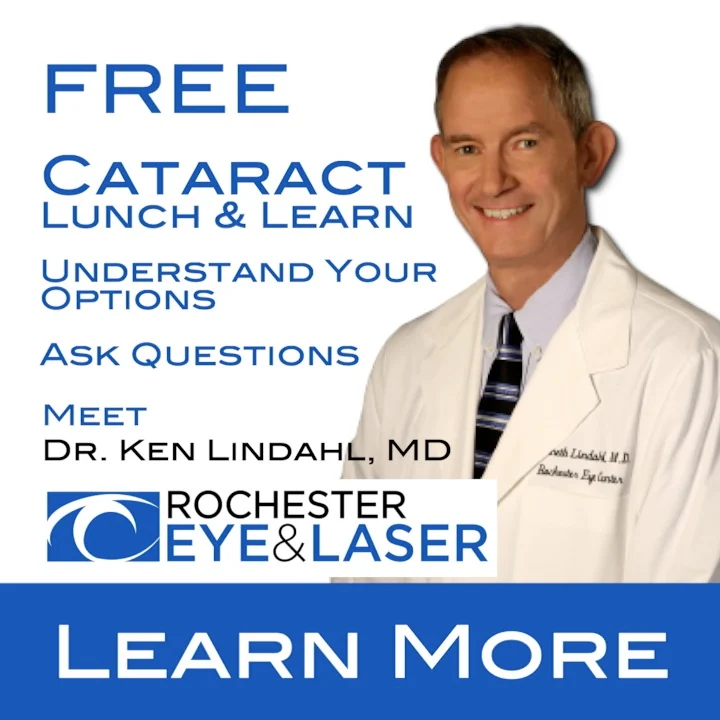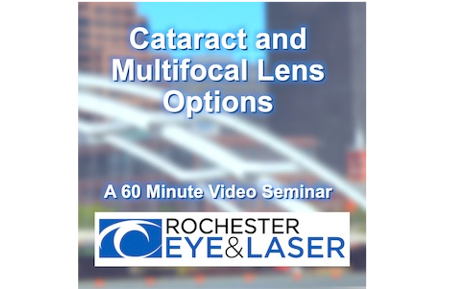Cataract Awareness Month
Cataracts are the leading cause of blindness in the United States, according toPrevent Blindness America, which declared June as Cataract Awareness...

Cataracts, a common eye condition that affects almost everyone as they age, often go unnoticed until our 60s or 70s. We may start experiencing more glare, blur, and difficulty reading road signs, without realizing that our vision is deteriorating. It's astonishing how removing cataracts can reveal a whole new world of vibrant colors, as patients often discover that their furnishings appear completely different after the surgery. Cataracts are a major cause of blindness worldwide, but fortunately, they can be completely cured through surgery. In this blog post, we will delve into the age at which cataracts typically develop, along with the associated risk factors and available treatment options.
Cataracts slowly cloud the natural lens in the eye, leading to blurry or hazy vision, glare around lights, and difficulty seeing at night, especially while driving. The lens acts like a camera, focusing light onto the retina. However, when cataracts form, they scatter and filter the light, causing these visual symptoms.
While cataracts are primarily a result of the natural aging process, they can also be triggered by various factors, including trauma, certain medications like steroids, radiation exposure, and systemic health issues such as diabetes, obesity, smoking, and ultraviolet light. Typically, cataracts develop symmetrically in both eyes and progress at varying speeds depending on the underlying cause and individual factors.
Cataracts have the potential to develop at any stage of life, including in the womb. Some unfortunate infants are born with congenital cataracts, which can prove to be extremely challenging to treat. However, it is worth noting that cataracts are most commonly seen in older adults. According to the American Academy of Ophthalmology, more than half of all Americans over the age of 80 have either experienced cataracts or undergone cataract surgery.
That being said, it is not uncommon for cataracts to begin forming during middle age. In fact, some individuals may find themselves dealing with cataracts in their 40s or 50s. This type of cataract is known as age-related cataracts, and it occurs as a result of the natural aging process of the eye. We have seen people in the late 30s who have had cataracts that were quite dense.
As we grow older, the proteins within the eye's lens start to undergo changes, leading to a loss of transparency in the lens. To provide an appropriate analogy, envision a plant growing in clear tap water within a glass on a windowsill. Initially, the water is clear, but over time, it gradually turns a yellowish-green hue and becomes cloudier. This is similar to how the lens of our eye appears after many years. It starts off with a slight yellowish-green tint and progressively becomes cloudier and less transparent.
Different types of cataracts can also develop at various stages of life. Congenital cataracts are either present at birth or develop during early childhood. They can be caused by genetic factors or infections contracted during pregnancy. Traumatic cataracts, on the other hand, can arise following an injury to the eye. Secondary cataracts may develop as a complication of certain diseases or medications. Steroids, in particular, have a common association with cataracts. Individuals can develop what is known as a posterior subcapsular cataract as a result of systemic steroid use, the use of steroid-containing eye drops, or even the use of nasal spray such as Flonase.
There are several risk factors that can increase the likelihood of developing cataracts, including:
If you have any of these risk factors, it’s important to be vigilant about your eye health and to see an eye doctor regularly for checkups.
Cataracts can cause a variety of symptoms, including:
It’s important to note that some people with early-stage cataracts may not experience any symptoms at all. This is why regular eye exams are important for detecting cataracts and other eye conditions.
The only way to cure cataracts is through surgery, which involves removing the cloudy lens and replacing it with an artificial lens. Cataract surgery is one of the most common and successful surgeries performed in the United States, with a success rate of over 98%. During the surgery, the cloudy lens is removed and a small incision is made in the eye. An artificial lens, also called an intraocular lens (IOL), is then implanted to replace the natural lens.
Cataract surgery in the United States is performed on an outpatient basis and is a safe and straightforward procedure. Most people are able to resume normal activities within a day after surgery, although it may take a few weeks for vision to fully stabilize.
In some cases, cataract surgery may not be necessary if the cataracts are not causing significant vision problems. In these cases, your eye doctor may recommend using prescription eyeglasses or contact lenses to correct vision problems caused by cataracts.
While there is no surefire way to prevent cataracts from developing, there are several steps you can take to reduce your risk of developing them:
Cataracts, a common eye condition that can lead to significant vision problems if left untreated, can develop at any age and are caused by various factors. By regularly getting eye exams and taking preventive measures, you can reduce the risk of developing cataracts. However, if cataracts do develop, cataract surgery is a safe and effective treatment option. If you are experiencing any vision issues or are at risk of cataracts, it's essential to schedule a comprehensive eye exam with Dr. Ken Lindahl.
Want to learn more? Come to our free Cataract Lunch & Learn. Learn more and register below:

Cataracts are the leading cause of blindness in the United States, according toPrevent Blindness America, which declared June as Cataract Awareness...

In this video Kim Fullone, Former Director of Clinical Services, and Dr. Ken Lindahl explain Cataracts, Cataract Surgery, newer LASER cataract...

One certainty in life is that everyone will eventually develop cataracts. In fact, cataract formation starts earlier than you might think,...